Turning Mayhem into Memory
The Stripped-Down Truck Bin That Saved Our Fishing Trip
“There’s no bilge bucket, Dad.”
“Are you sure?”
“Yeah, I looked all over. The boat’s pretty full of water.”
Our 12-foot fiberglass boat was one-third full of a dead bug rainwater stew and partially beached on the lake’s shore. This boat was our means of transportation; we were here to fish and needed it. Without a bilge bucket, we wouldn’t be going anywhere since we couldn’t empty the water. The sand was soft, and the stern was still in the water. Tipping the boat over wasn’t possible in this position due to the weight of the water.
This short clip shows the water we fished:
On this trip, we booked an off-grid cabin that offered access to three nearby lakes. Upon arrival, the park administration required me to designate which lake we'd fish each day. I admit I was irritated by this rule, but I ultimately obliged. I’m accustomed to the US fishing license system, which generally permits license holders to fish wherever they please within the state’s geographic boundaries.
By contrast, in the Sepaq system, our accommodation included exclusive access to these bodies of water; they were not open to the public, but only to those staying in the refuge as part of a “fish-and-stay” package.
Sepaq provides a fiberglass boat at each lake. Anglers can row them or attach a small motor. That morning, we brought a 4-stroke gasoline 2.5HP motor to attach to the stern but hadn’t secured it yet since I wasn’t sure if we’d be able to shove off; about fifty gallons of rainwater stood between us and a morning of fishing.
We could drive back to our cabin to get a bucket, but that would set us back about ninety minutes. I knew if I could get the boat fully out of the water and onto firmer ground, we could tip it over to empty it. Arms crossed, my then 14-year-old and I stared at the boat. I looked up and realized I had a line of sight to the dirt road, about 100 feet uphill.
“Wait here,” I said as I speed-walked up through the alders and brambles toward the truck.
Ten minutes later, the boat was empty, and we were shoving off with the purr of my Yamaha outboard motor.
A Quick Word on Sepaq…
The Sepaq system of Quebec contains thirteen wildlife refuges. If you can navigate their reservation system, you’re rewarded with access to some of the best remote territories of eastern North America. (I covered last year’s trip in this post).
A 200-foot coil of arborist rope—stashed in my truck’s “emergency bin”— saved us.
On that fine Laurentian morning, I tied the boat's bow to my truck’s hitch and pulled it to firm ground, enabling us to then tip it over and empty it. Without water inside, the boat was light enough to push back downhill into the lake.
Inside the Emergency Bin
The philosophy behind my truck emergency bin is similar to my med kit and toiletry bags; they stay packed and don’t get cherry-picked, which means I can count on the contents always being there.

I’ve used each item in the emergency bin at least once, and the sole purpose is function: no frills or distraction, only what works reliably for the least amount of money.
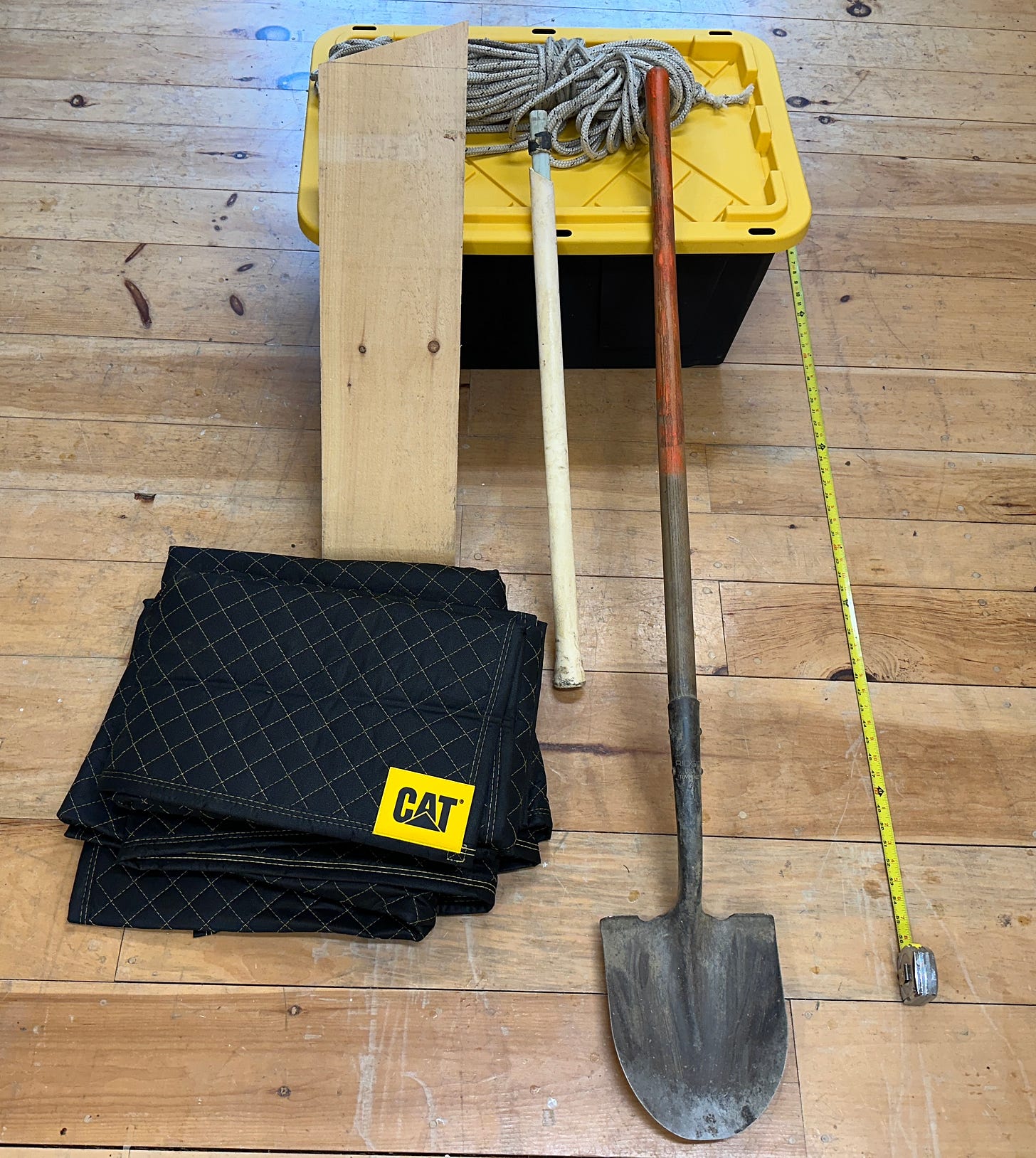

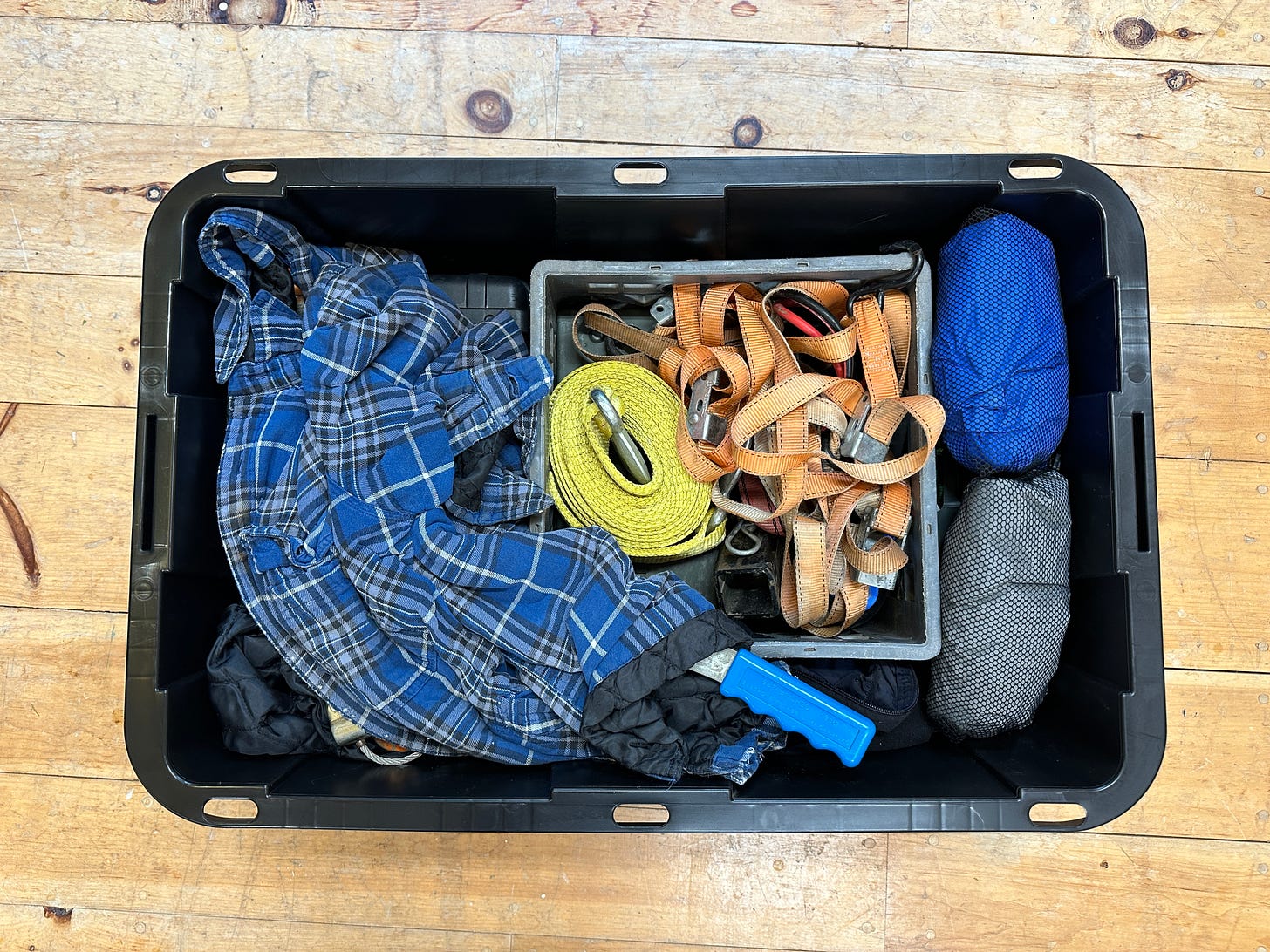
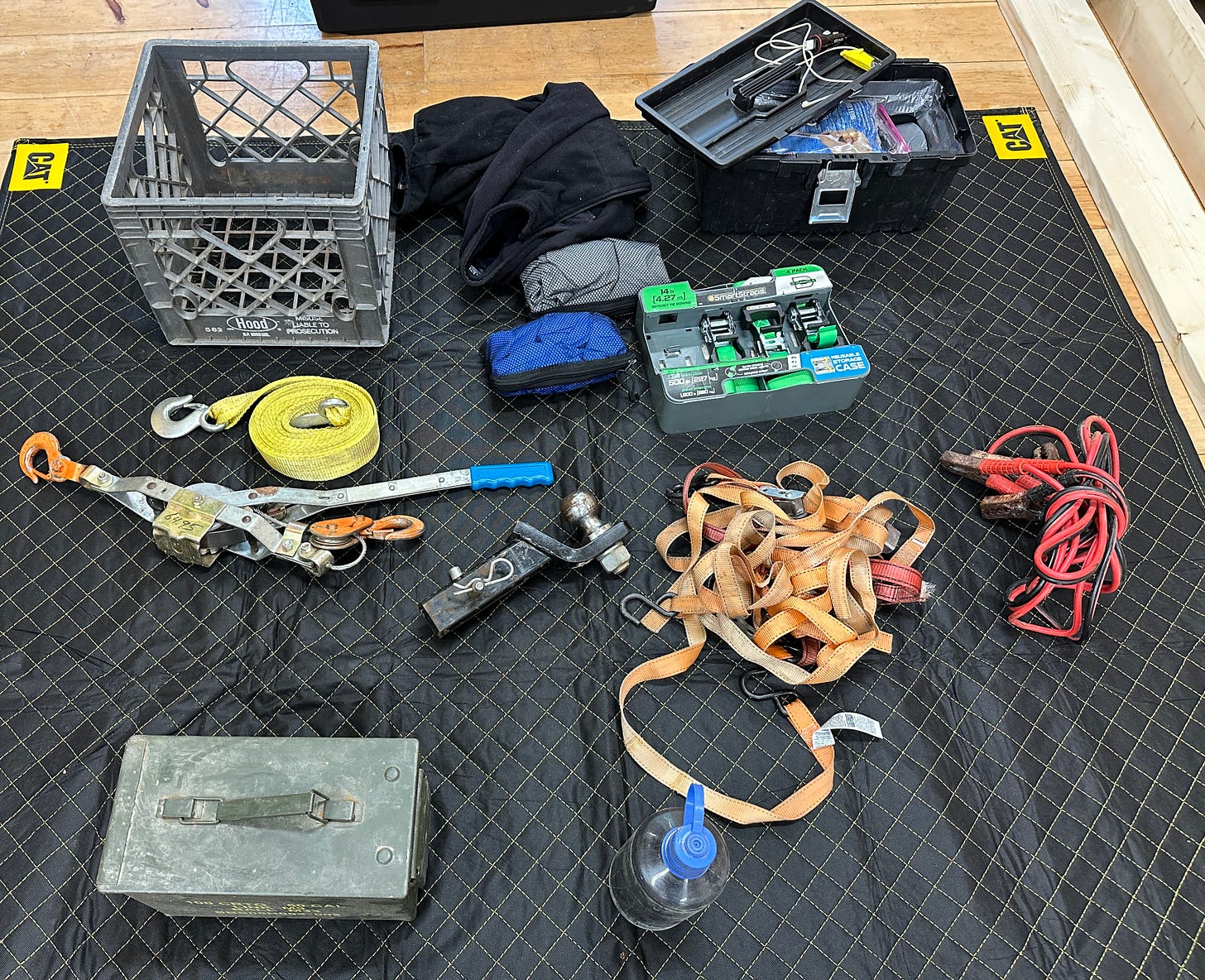

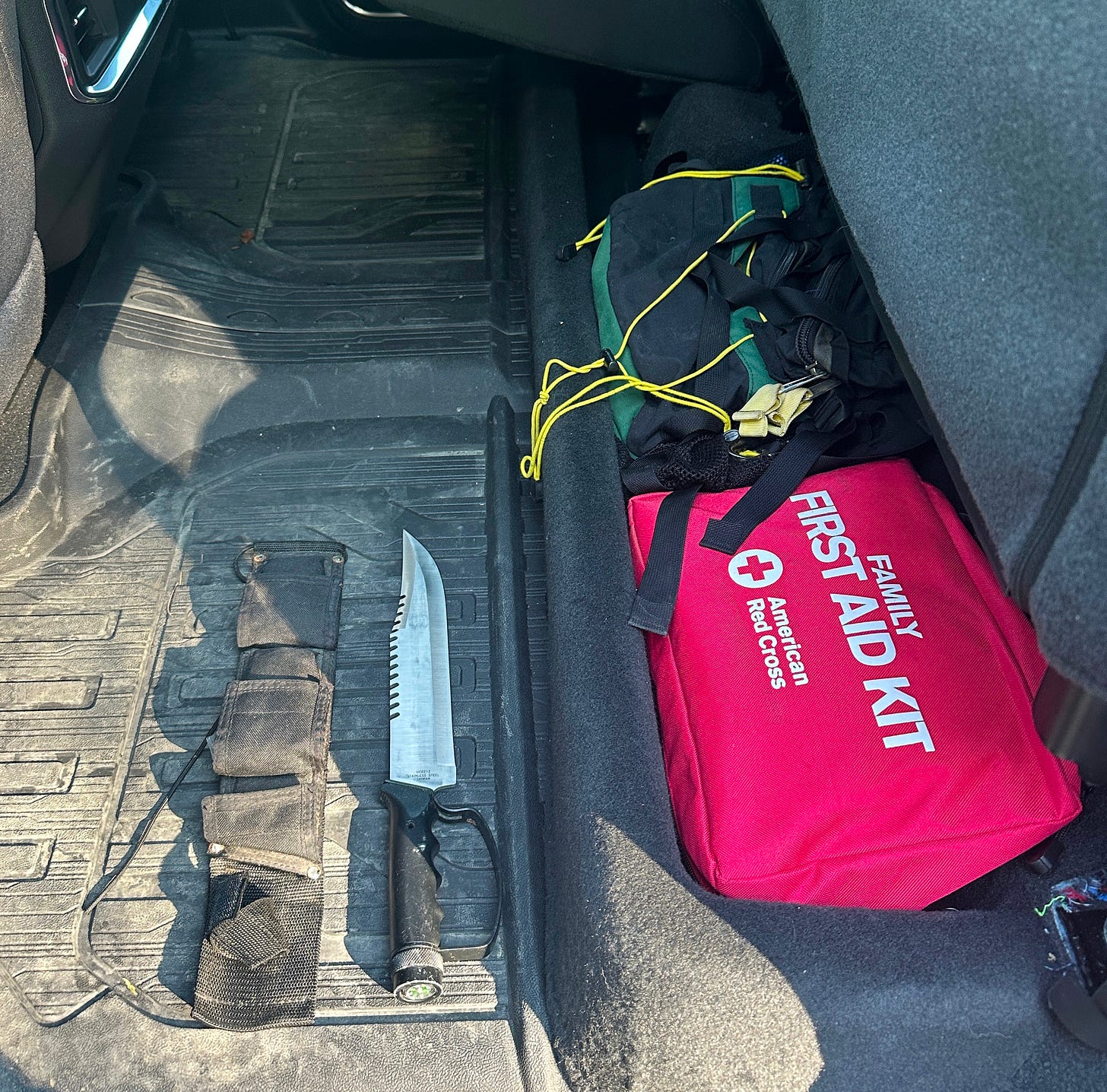

Ten walleye and 20 pike later, we beached the boat. Shuttling our gear up to the truck bed, I looked back at my son, who had a pensive but simultaneously nonchalant expression on his face (i.e., as any parent could see, he looked guilty). He stood next to the bow, examining a thorny bramble bush.
“What is it?” I asked.
“Nothing,” he answered.
“What?” I pried again, but this time locking eyes with him. I could see him doing the mental math, realizing that the truth was inevitable; there was no way to conceal it.
“There’s a bilge bucket here in the bushes. I didn’t see it before.”
I asked him three times earlier that morning if he was sure there wasn’t a bilge bucket.
I laughed.
“Put it in the boat so the next people will see it.”
Wish List/Missing Items?
I’m happy with this amount of emergency gear, but there are three other items I occasionally consider:
A small camping stove and cooking pot set.
This would also require me to carry a fuel canister, which presents a fire hazard. So I’m still hedging on this item.
A Halligan bar.
A Halligan bar is a multipurpose tool with countless uses, including prying and smashing. I hope to find one at a yard sale.
“Truck Gun”
Popular on gun and hunting-related social media right now, but I have not felt the need for it. Unless you’re in grizzly bear country, I don’t see any numerically informed purpose to having a gun floating around your vehicle.
Want More?
Some of my previous posts about the region and its history:






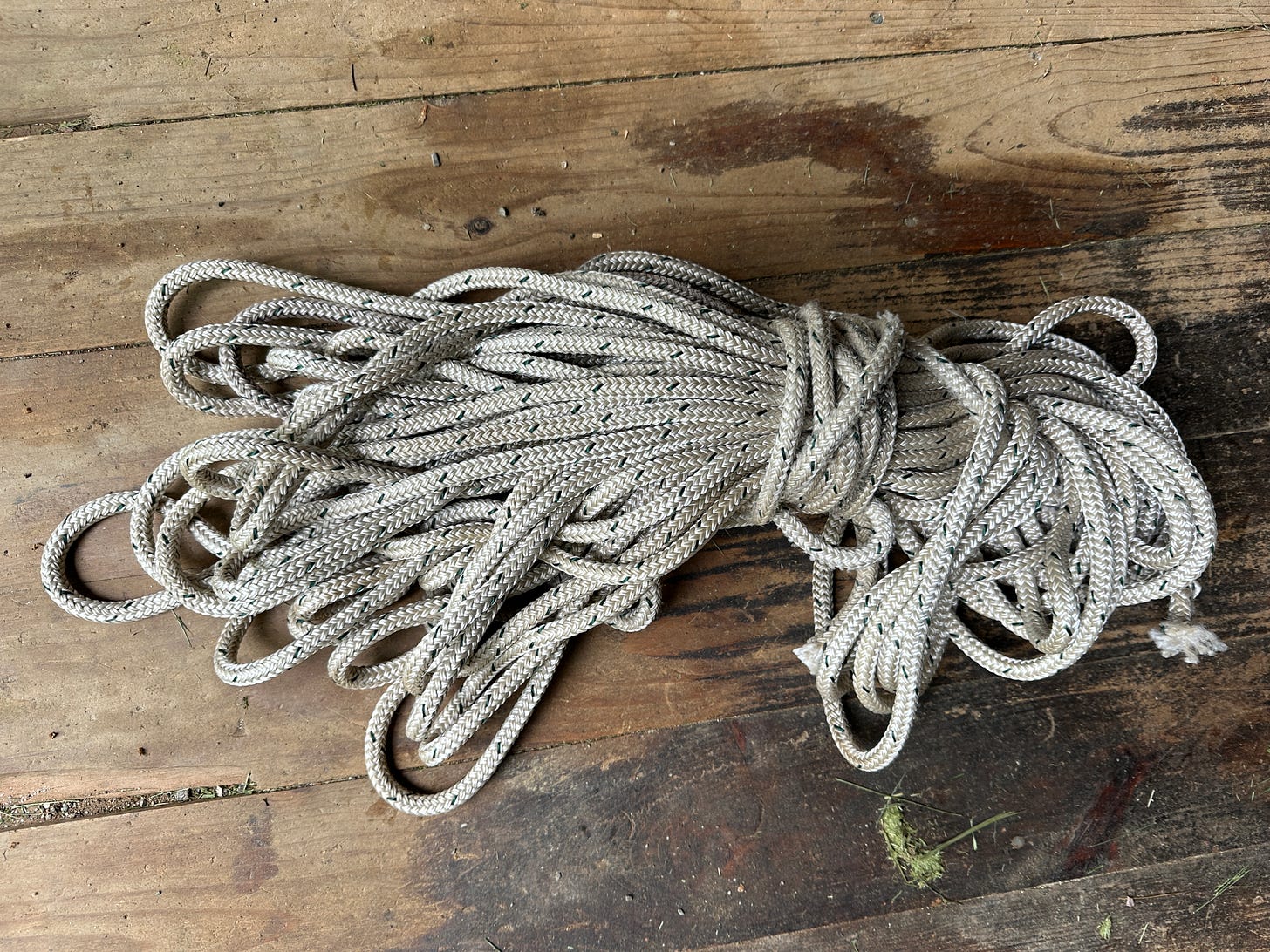
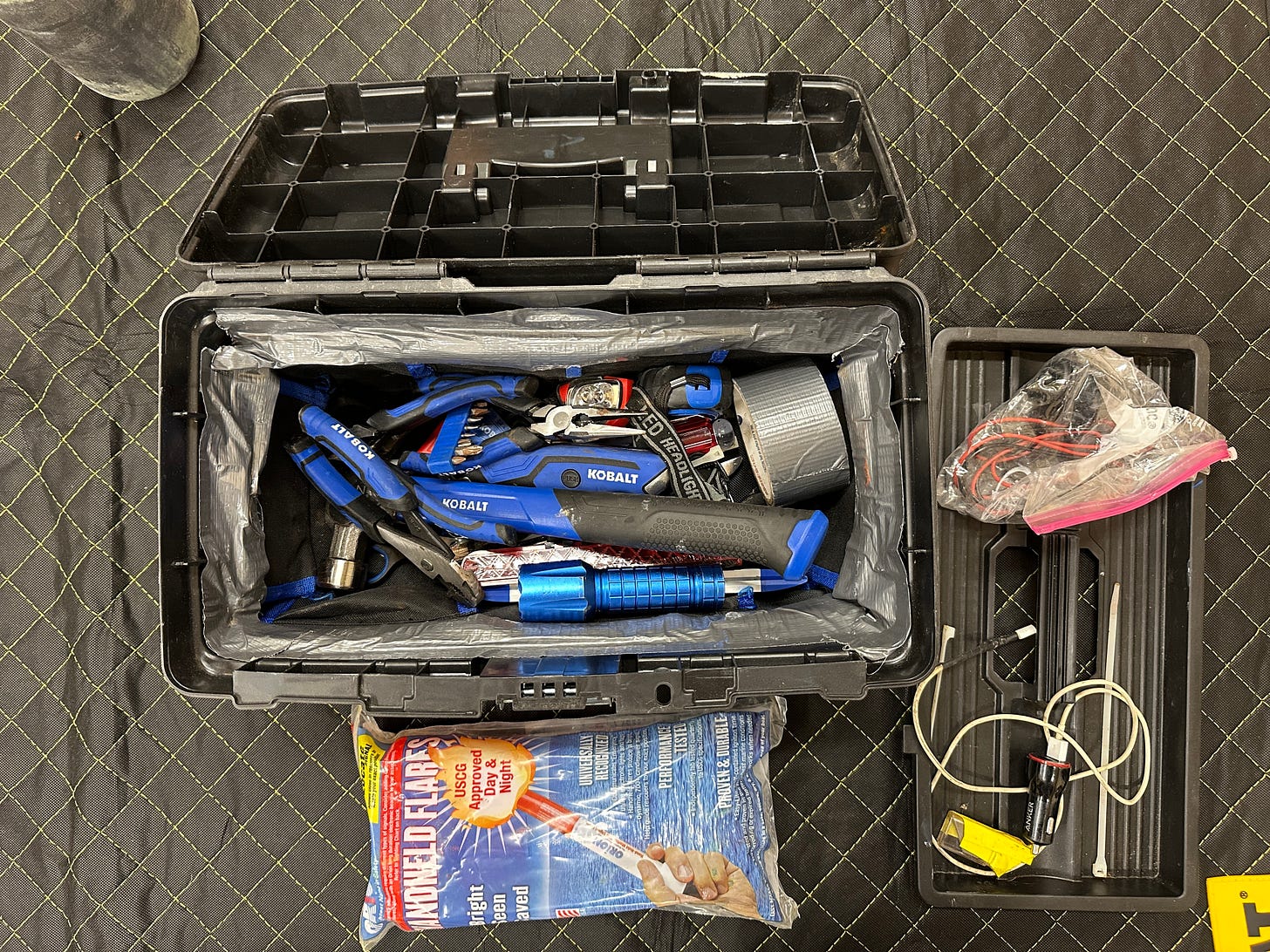
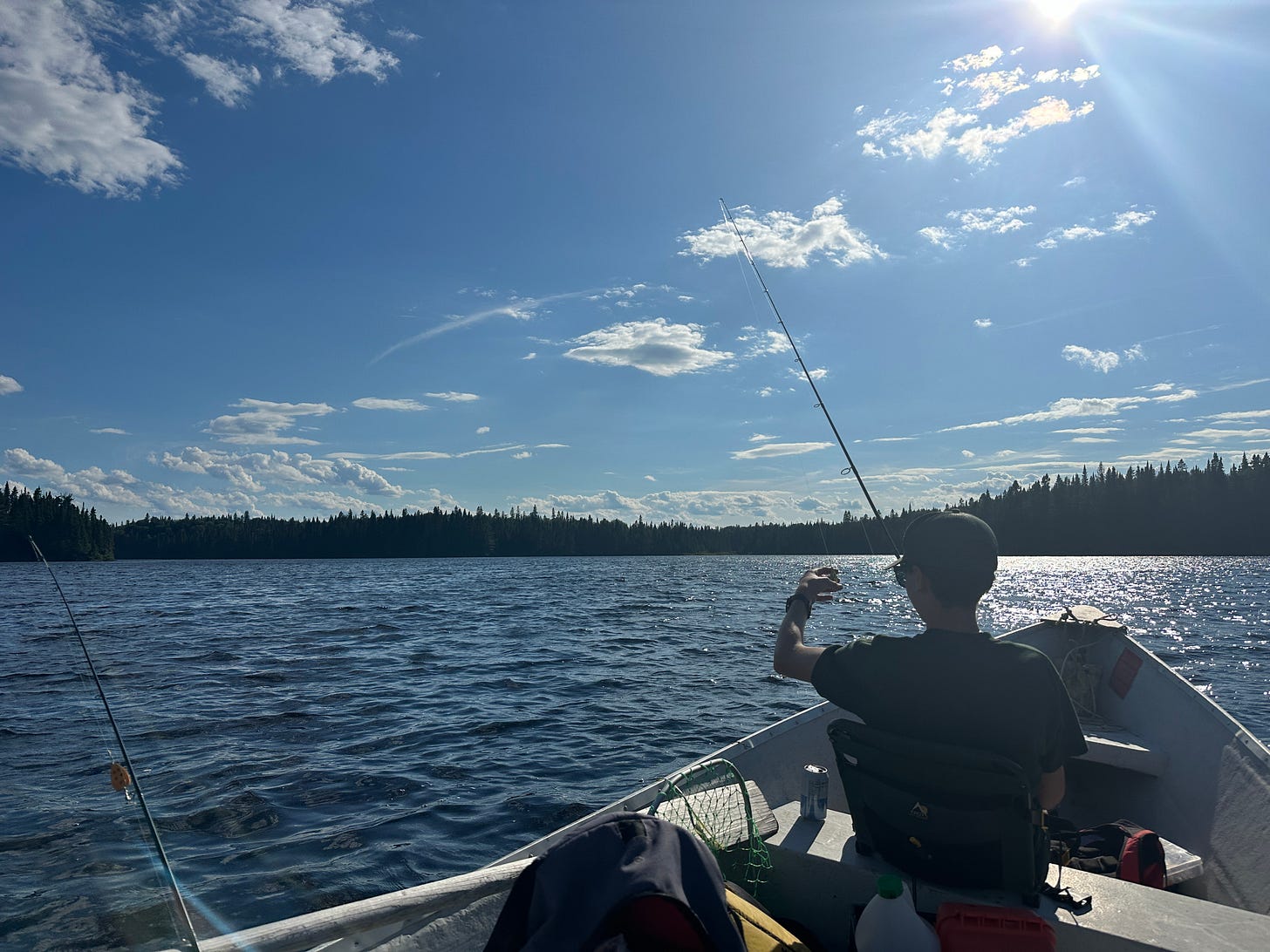
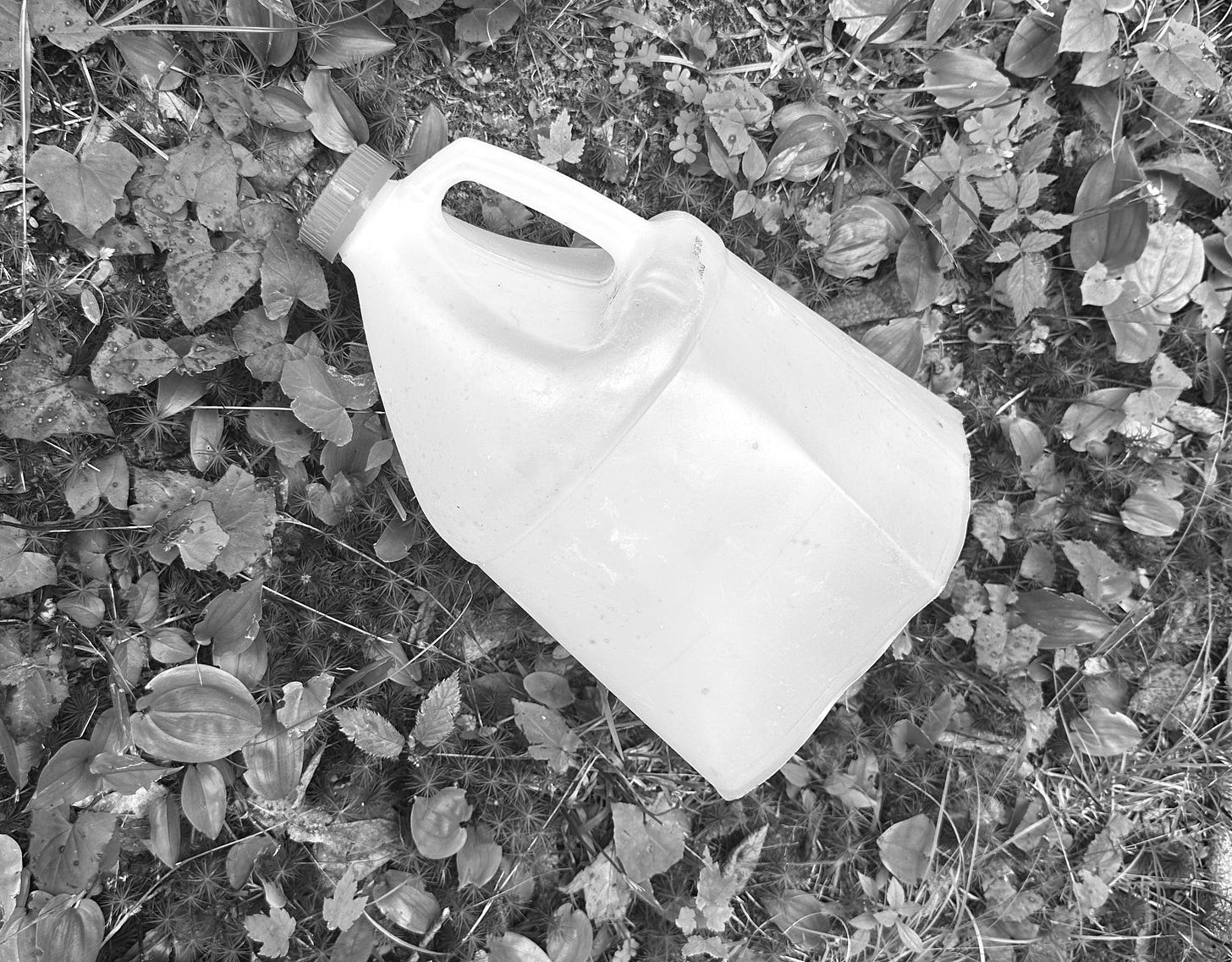
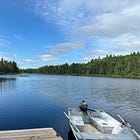

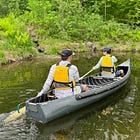
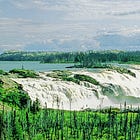
Thanks for sharing your truck load out! I have an emergency kit in mine, too, but it isn’t quite as well set up. This gives me ideas! Two things I do have that may be worth considering are a jump box for when there isn’t another vehicle to use jumper cables with, and a small air compressor to put air in tires.
And, while as a cop I’m almost always carrying a gun, I would never consider leaving a gun in a vehicle at any time. I’ve taken way too many reports for guns stolen in car break ins.
Thank you for sharing what’s if your utility box! I have most of those but they’re all shoved under the back seat and drivers seat. I’m finding a box so it’s all organized in one spot! There’s a couple items I’m going to add from your list. I also carry a bottle jack. The amount of times that’s come in handy is surprising. In winter I have traction treads. I think they’re just a Canadian thing. I’ve never been able to find them in the States. They’re metal and can be placed under tires when stuck in snow.